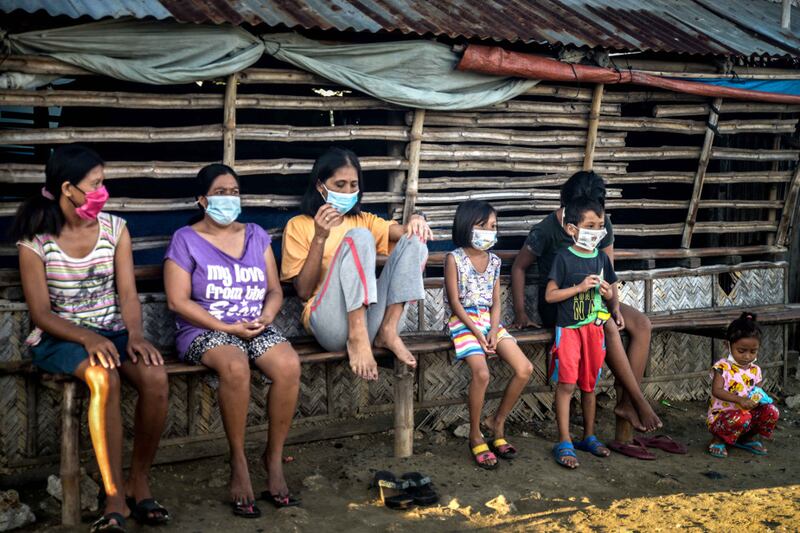Updated at 7:26 p.m. ET on 2021-11-15
Boys and girls at the Longos Elementary School wore masks and sat at glassed-in desks Monday as they attended their first in-person classes in 20 months.
Their campus in Alaminos City, northern Philippines, is among 100 public schools participating in the central government’s pilot program to resume face-to-face classroom instruction. The Philippines is among the last countries in the world to lift restrictions on their education systems since the COVID-19 outbreak began here in early 2020.
The Department of Education selected public schools in areas where there is a low risk of contracting the virus to allow students to return. More than a dozen private schools were selected as well and are expected to reopen by the end of the month.
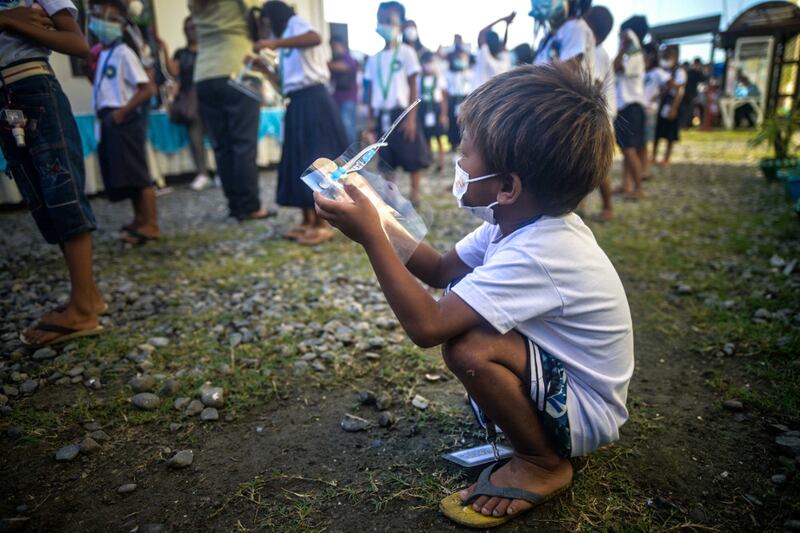
“We are very happy we were chosen within the city as one of the [sites for] pilot implementations of face-to-face classes,” Fermilyn Rabago, the principal at Longos Elementary School, told BenarNews.
“We know this will be a hard task, but I’m confident of my teachers’ dedication and skills,” she said.
Implementing health protocols such as social distancing would be the main challenge, especially inside classrooms, the principal said.
“We installed plastic barriers per student, but making them sit will be a problem because young kids get bored easily,” Rabago said.
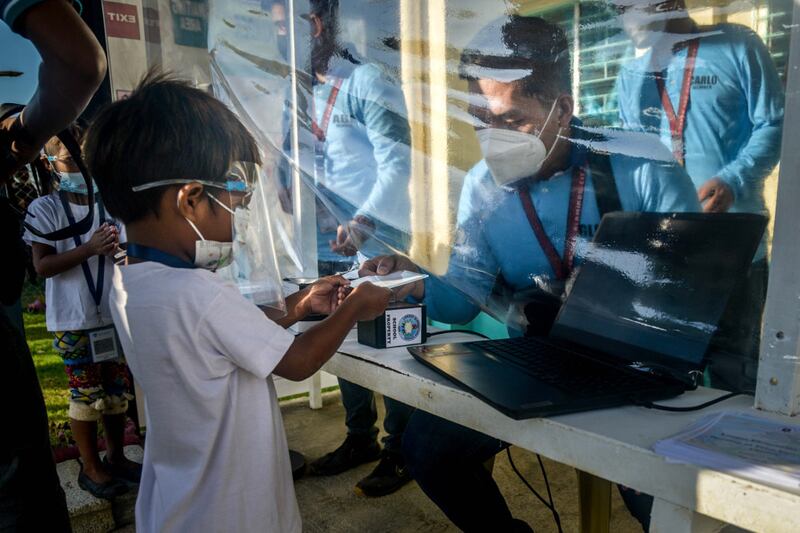
Lorna Bugayong, the divisional superintendent for schools, said educators had planned to jump-start academics, but it soon became apparent that student-teacher relationships would need to be repaired, too.
On Monday, first-time students at Longos Elementary appeared anxious and perplexed by the many health protocols. Adding to their anxiousness was the presence of armed police in camouflaged uniforms who visited some schools in the pilot program.
BenarNews was allowed to photograph but not interview children at the campus.
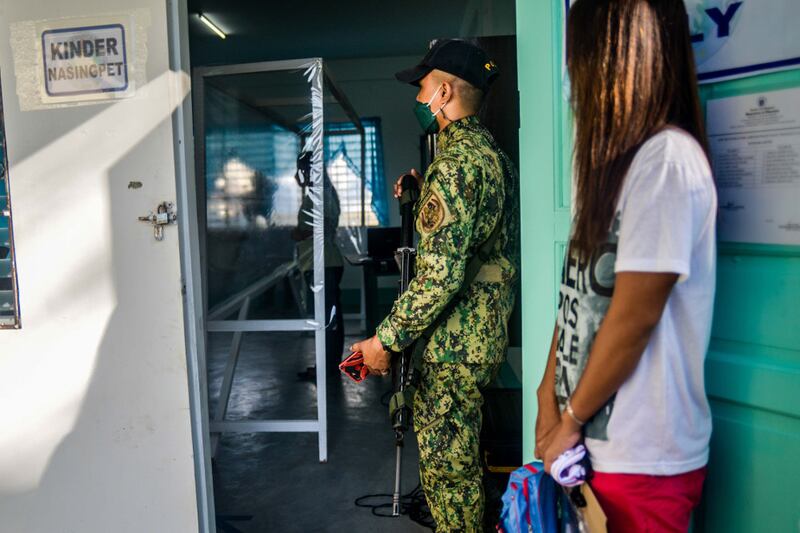
In Manila, the Department of Education said it had received reports “regarding the presence of uniformed personnel equipped with their issued firearm” inside one of the pilot schools. But it said it appeared the police were part of a security detail of an unnamed politician.
“The policy clearly states that schools, as a general rule, should be free from the presence of armed combatants, whether they are from the government forces or armed groups,” the department said in a statement.
For almost two years, the education department has depended mostly on modular distance learning, but internet access proved to be spotty in many areas away from the capital Manila.
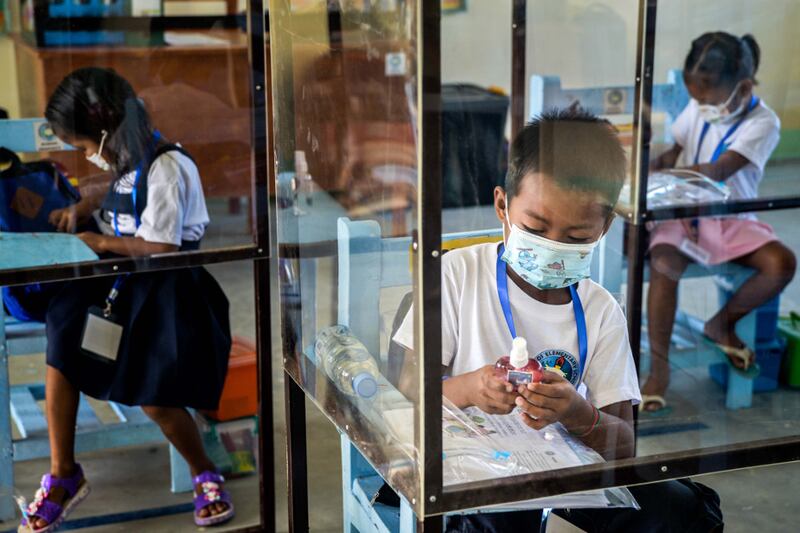
“Implementation of health protocols are our challenge, that is why we made sure … that our teachers and parents are fully vaccinated,” Bugayong said. “We also installed the plastic barriers at the classroom and the triage to always check on the vitals of pupils and school personnel.”
Meanwhile, Jelou Credo, a Grade 12 student in Lanao del Norte province, told the state-run Philippine News Agency (PNA) that she had not worn her school uniform in a year.
“I am happy that I can see my classmates again. At the same time, I have worries that I might bring the virus home. I just prayed before I left home,” said Credo, who arrived an hour before school started, according to PNA.
The College Editors Guild of the Philippines (CEGP), an alliance of campus newspapers, welcomed the tentative reopening of classes, but said that the government must ensure antigen testing, vaccination programs and retrofitting classrooms to avoid spreading the coronavirus.
"Weekly COVID-19 antigen testing must be available for everyone during this testing. At the same time, special vaccinations should coincide within these areas," Regina Tolentino, CEGP's deputy secretary-general, told BenarNews.
"It is also important to have a proper ventilation inside with two functional fans and a filter for air-conditioned ones, and the presence of school nurses in case anything happens," Tolentino said.
